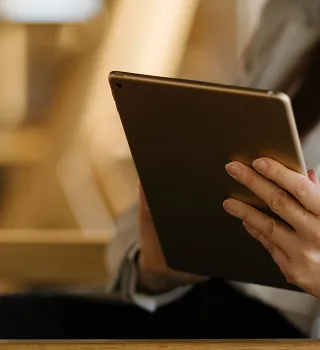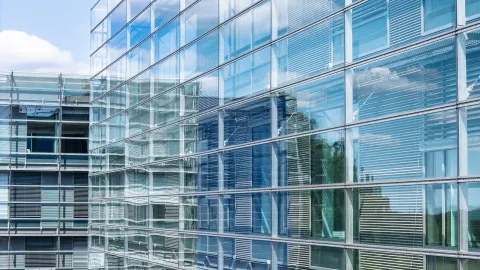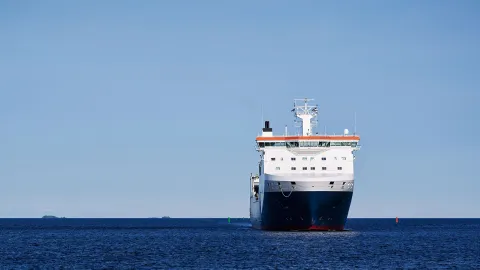Export financing outlook in Africa – read more in Finnvera’s overview

Published date
There is international interest in Africa: the EU has published its Africa strategy and the Finnish government is creating one of its own. Last year, slightly more than 2 per cent of Finnish exports of goods went to Africa but according to the Minister for Foreign Trade, the doubling of exports is a goal worth pursuing in the future. Finnvera is an active participant in various networks, such as the Team Finland network and Finland Chamber of Commerce’s Africa network, and cooperates with different providers of financing to find new ways to use Finnvera’s financial instruments in exports to Africa. Finnvera’s country risk management team prepared an overview of Africa in 2020, the year characterised by the coronavirus crisis.
Africa has more than 50 states, and they differ greatly from one another. Most of them are low-income or lower-medium income countries with still significant development goals. Some 33 African countries are on the list of the least developed countries.
On the other hand, the countries of the continent also have their strengths: Some countries in East Africa, such as Kenya, Rwanda, Tanzania and Ethiopia, have had some of the world’s fastest growing economies in recent years. However, in Finnvera’s country risk classification, the countries are still considered to have poor or very poor solvency. In South Africa, categorised as a country with reasonable solvency, the banking sector continues to be close to the Western standard. In North Africa, Morocco has a stable operating environment and a versatile economy. Algeria is dependent on oil but its banking sector has been extensive and well-functioning. Egypt had a good growth rate before the coronavirus crisis. Support from international financial institutions and the young, growing, consumption-driven population contribute to the expectations that growth will resume after the crisis.
The trends that can be seen in the overview also open up opportunities for Finnish exports:
- Abundant natural resources, fast population growth, urbanisation, climate change: Africa has 40 per cent of the global natural resources and the population of the continent is estimated to double to 2.5 billion in the next 30 years. Climate change has increased extreme weather events and longer-term impacts can already be seen. The continent needs significant investments in sectors that Finnish enterprises know well.
- Increasing economic and political interest from foreign powers: The EU has become aware of the need to deepen its relationship with Africa. China and Russia have been interested in Africa’s natural resources for a long time already and Turkey and India are also pursuing influence in the region. The United States has also adopted a more active stance towards Africa. International competition in the region is increasing, but it can also make new development project financing available.
- Scattered economic environment on the continent: The agreement on the African Continental Free Trade Area, AfCFTA, will gradually dismantle the obstacles to trade within the continent and boost economic growth while simultaneously intensifying competition. The goal for the gradual launching of free trade is the beginning of 2021.
The coronavirus pandemic has curbed growth and increased indebtedness
The coronavirus epidemic has curbed economic growth even in the most rapidly growing states. As far as major economies are concerned, it is predicted that Nigeria’s GDP decline will be -4.3 per cent and South Africa’s GDP decline -8 per cent in 2020.
Africa is dependent on raw materials, metals, oil and tourism. The closing of borders and the disruption of industrial supply chains, resulting from the coronavirus epidemic, have impaired demand, lowered raw material prices and stopped infrastructure projects that are important for future growth.
“Especially in Africa, the economic consequences of the coronavirus pandemic may have a bigger impact on people’s health than the disease itself. There are no economic safety nets. Lack of medicines and food is an acute problem, which has increased political unrest in many countries. Democratic development in Africa is still fragile and there may be setbacks, as the situation in Ethiopia shows,” says Outi Homanen, Senior Adviser at Finnvera.
The International Monetary Fund (IMF) and the World Bank have granted assistance to support health care in poor countries. Under the Debt Service Suspension Initiative (DSSI), the countries may have applied for a suspension of their government-to-government debt payments, as more than 30 African countries already have. The initiative will continue in 2021.
The adequacy of capital and over-indebtedness are problems for many African countries.
Financing for exports to Africa with the aid of networks
Finnvera’s own exposure for export credit guarantees in Africa is currently fairly low, EUR 0.2 billion. Finnvera considers the risks of export credit guarantees in African countries in the normal manner: the ability to take risks varies depending on the destination country and collateral. In Africa, as elsewhere when getting to know new markets, it is recommended to use letter of credit as the payment method at the initial stages of export.
- Finnvera considers each export project separately and checks the creditworthiness of the risk object.
- Cooperation with other international providers of financing improves credit risk management and makes it possible to participate in larger project entities.
- Team Finland cooperation enables the promotion of Finnish projects targeting Africa.
During the coronavirus crisis, international development financing institutions, public creditors and the representatives of private creditors have discussed new financing models, which would make it possible to target affordable financing specifically at poor countries suffering from the coronavirus epidemic. Additional financing means more investments and, consequently, opportunities also for Finnish exporters.
“We follow the key trends and operators when it comes to export and project financing. We approach new projects case by case and make good use of cooperation with other providers of financing,” says Homanen.
Finnvera’s export credit guarantees in a nutshell:
In competitive bidding related to international trade, the buyer often requests proposals of favourable payment terms and conditions. A Finnish export company may make arrangements related to the term of payment, as requested by the buyer, through Finnvera’s export credit guarantees, for instance. Finnvera acts in cooperation with the banks that finance export trade.
- Credit insurance for the exporter against the buyer’s payment risk
- Export credit guarantee granted to the provider of financing when export credit (Buyer Credit Guarantee) is arranged for a foreign buyer
- Letter of Credit Guarantee for the confirming bank when the payment method is a letter of credit
- Guarantees related to export trade (especially for SMEs)
Export credit guarantees cover payment delays caused by commercial and political risks. The price of the export credit guarantee is determined by the length of the term of payment, the buyer’s payment risk and the destination country’s country classification. Finnvera categorises destination countries into a country classification, which you can see on a map.
Further information:
Outi Homanen, Senior Adviser, Finnvera, tel. +358 29 460 2722
Further information about Finnvera’s export credit guarantees.
Read more about Finnvera’s country classification.



